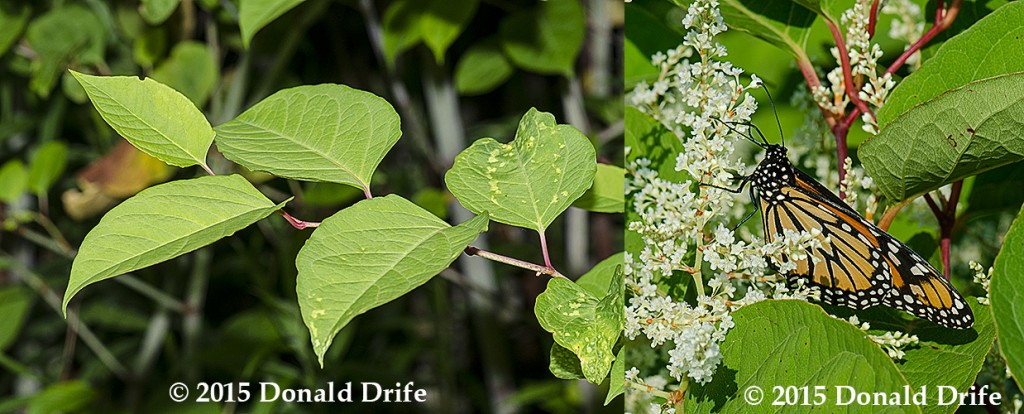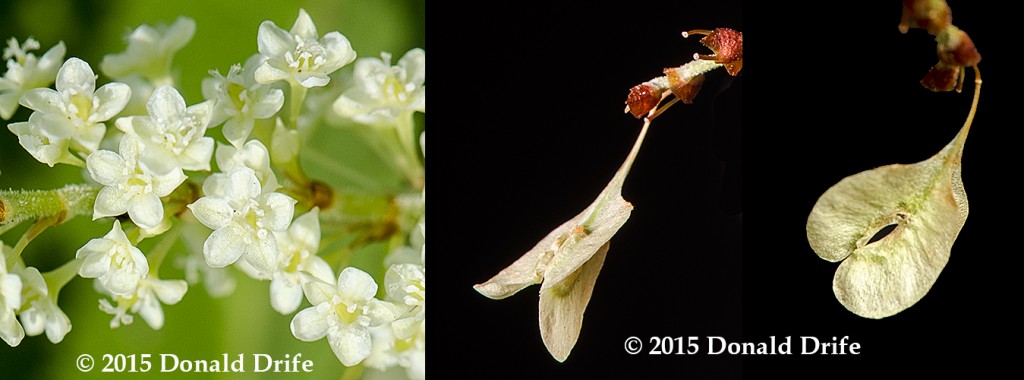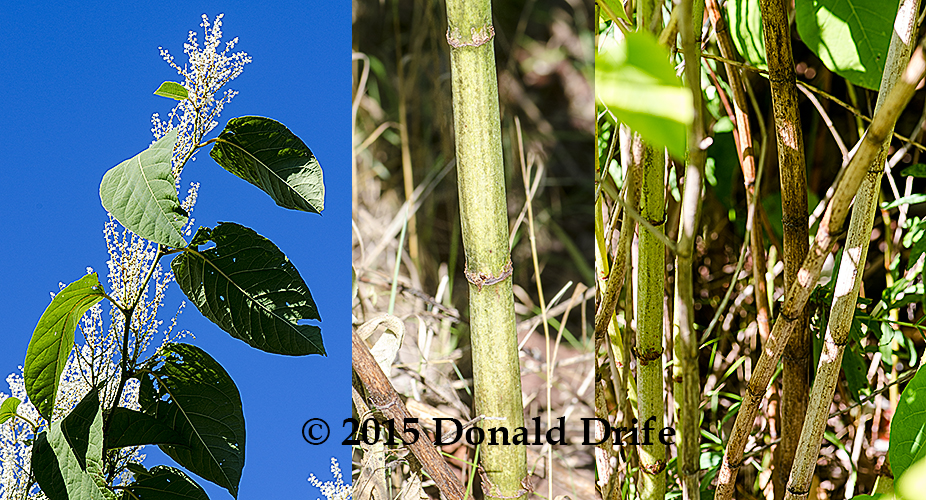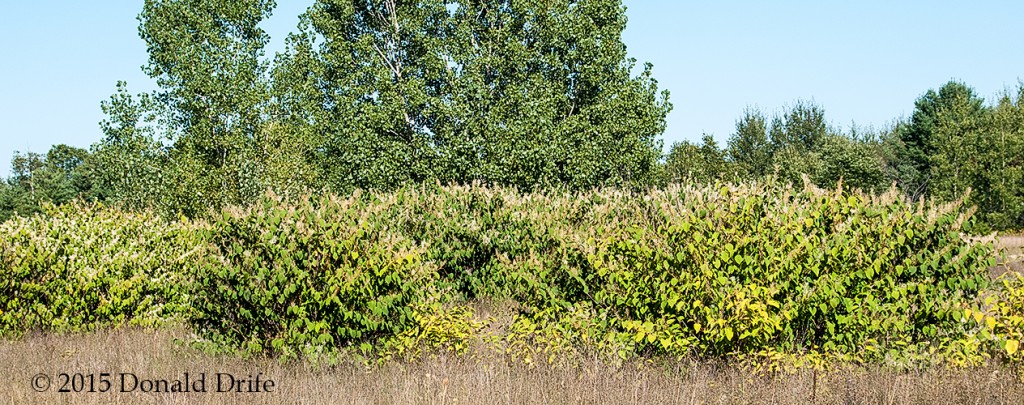Japanese Knotweed (Fallopia japonica) also called (Polygonum cuspidatum) is identified by its jointed stem, with a whitish bloom, that can be 20mm (3/4 inch) in diameter. Large, alternate leaves, with pointed tips are also distinctive. Its flowers are white and normally held upright in short inflorescences. The seeds are three parted and thankfully not all of them are fertile.
This plant has a hollow stem and is also called Michigan-Bamboo. It grows up to three meters tall (10-feet) and forms a dense monoculture. I have seen colonies that cover several acres. It can spread by seed or grow from sections of the stem or roots. It is impossible to dig out a large colony because even a small section of root re-sprouts.
In central lower Michigan it is called bee-plant. I saw a large colony of it with numerous bees and wasps feeding on it. Eight Monarch butterflies nectared there. However, its period of nectar production is short and many native plants are better nectar sources. The DNR is correct in prohibiting the importing or sale of this plant. It should be destroyed wherever it is found. This is primarily an identification blog but information on the control of this species can be found on the DNR’s website.
Japanese Knotweed was first recorded in the wild in Michigan in 1919. It is now found throughout the state. I have started to see it in central lower Michigan were it previously was absent. It is becoming common in all parts of the state and will prove to be a serious pest that is difficult to control.
Copyright 2015 by Donald Drife
Webpage Michigan Nature Guy
Follow MichiganNatureGuy on Facebook






Is there a way to locate people in the Lansing area who are fighting the Japanese Knotweed? I’d like to see firsthand how they are coping.
https://www.michigan.gov/invasives/0,5664,7-324-103844_68072—,00.html
Try the local CISMA group from the link above.